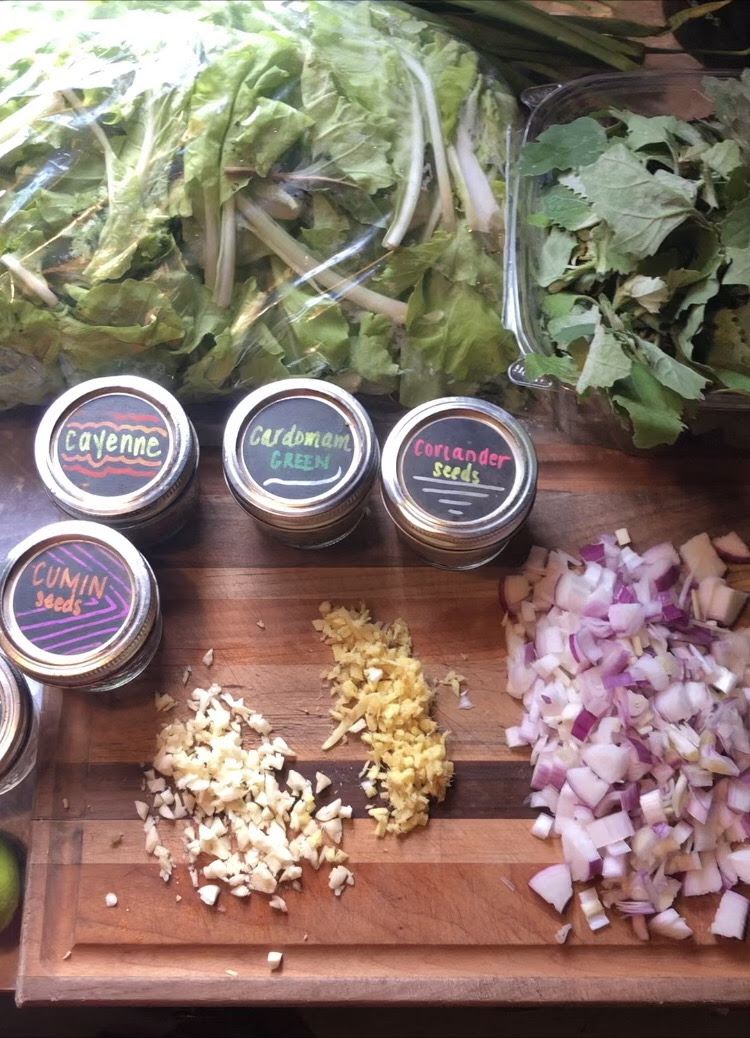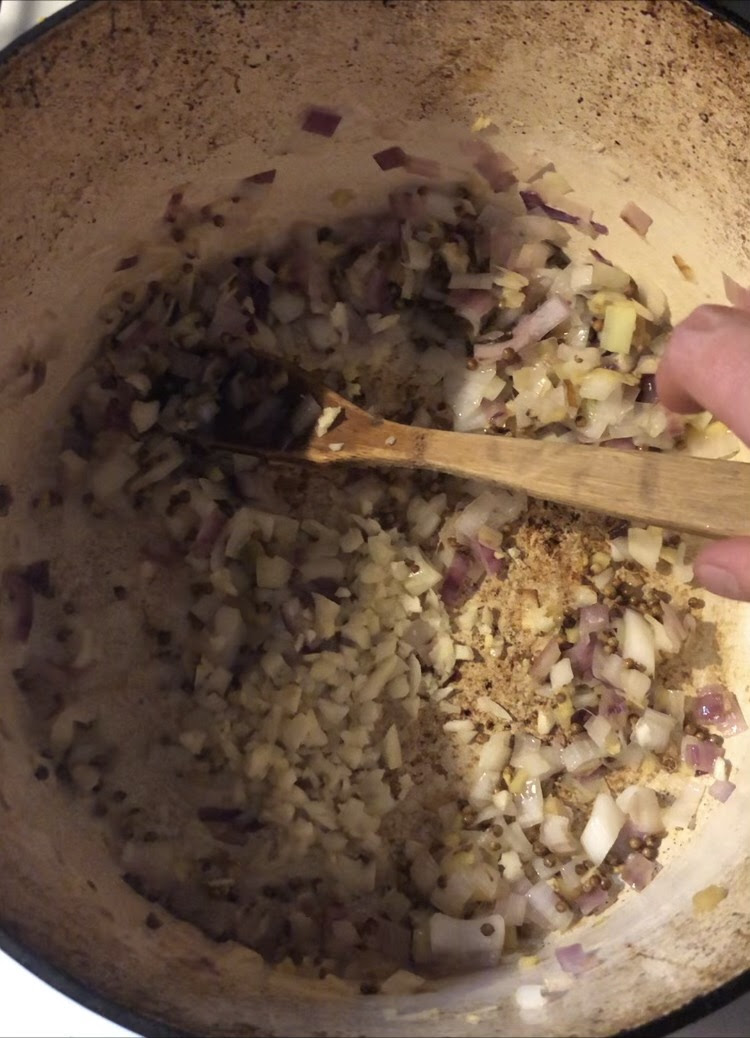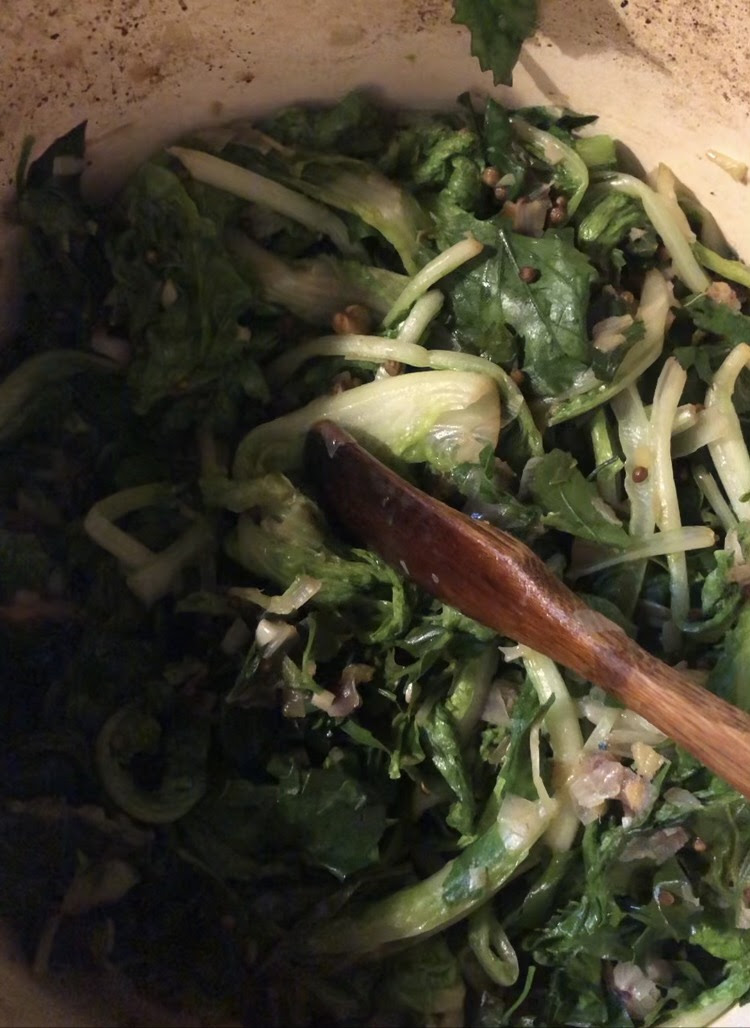Kohlrabi, Carrot, Scallion Fritters
Recipe adapted from: https://www.acouplecooks.com/kohrabi-fritters-with-avocado/
It’s Kohlrabi season and I love this vegetable! While it is a new vegetable to many of us here in the states, it is a very popular vegetable in Eastern Europe and Australia. It is often cooked and prepared similar to potatoes – soups, mashed, simmered in cream, etc. Peeled, diced, seasoned and roasted like potatoes is probably my favorite preparation (until this creation)! I also greatly enjoy raw (peeled) kohlrabi – it makes a great salad addition, but honestly I also eat them like radishes, smeared with butter and topped with sea salt.
A friend of mine recently texted me in a kitchen emergency situation. She was making veggie fritters and had run out of all purpose flour and wondered if rice flour would work in a vegetable fritter recipe she was making from a cookbook. And that’s where this idea started! We make summer squash and zucchini fritters in the summer all the time. Served alongside something from the grill – it’s an excellent way to use up a bumper crop. So I applied the same technique to some winter vegetables. Honestly – this recipe is super flexible. I used chickpea flour, because I had it and I love the flavor. It can be “thirsty” and an excellent, unique thickener. I also served this alongside a vegetarian spread and was looking to add as much protein as possible to my dinner plate. But you can use all purpose flour, wheat flour, rice flour — all will work great. Not a fan of kohlrabi? I encourage you to try it in this recipe, but if it’s a hard no, I bet butternut squash or sweet potatoes would be divine too!
This was a huge hit with my kids, too, though maybe they were just in it for the avocado yogurt sauce. Either way – they gobbled up their servings!



Ingredients:
- 2 small kohlrabi, peeled
- 2 large carrots, peeled
- 1 large scallion, sliced lengthwise and then sliced into thin ribbons
- 1 garlic clove, grated into bowl
- 2 eggs
- 1/4 cup chickpea flour
- 1/2 teaspoon garlic powder
- 1/4 teaspoon sea salt, plus more for salting after frying
- Freshly ground black pepper
- Frying oil of choice. I used avocado oil – enough to spread a nice thin layer (more than coat the pan, but we’re not deep frying here) on the bottom of your frying pan (~ ½ cup, depending on size of your vessel)
For the avocado yogurt sauce
- 1 small avocado
- 1/4 cup yogurt
- 1/2-1 lime, juiced
- 1 small garlic clove
- Salt & pepper
For sauce – blend all ingredients – I wiped out my food processor after shredding and used that, but combining by hand would work out just fine too.


Directions for fritters:
- Shred kohlrabi and carrots in a food processor or using the large holes in a box grater.
- Place shredded vegetables in a clean tea towel. Wring out all the excess moisture. If you’re using purple carrots (as pictured here), you may want to consider what tea towel you’re using as the carrots stain!
- In a medium bowl, combine all the ingredients. Mix well. I found my hands to be the best tool for the job, to ensure there weren’t any pockets of flour or eggs that hadn’t penetrated the vegetables. You may also find that more liquid escapes the vegetables during this step. I just strained it out of the bowl over the sink.
- Set your oven to warm or lowest heat. Set aside a baking pan, preferably with a rack on top. Preheat a large cast iron skillet over medium heat. Once it is hot, add the oil. You can test when the oil is ready by placing a small piece of batter into the pan to test it’s readiness to fry!
- When the oil is hot, use your hands to scoop about ⅓ cup of vegetables out and make a patty shape.
- Gently place into pan and fry on each side about 2-3 minutes until nicely browned and crispy. Remove the done patties to the rack on the baking sheet, sprinkle lightly with salt, and set in the oven until everything is done. Your goal is to keep everything hot and crispy! Continue frying until all the batter has been used.
- Top with avocado yogurt sauce and dig in right away – the hotter and crispier, the better!

















